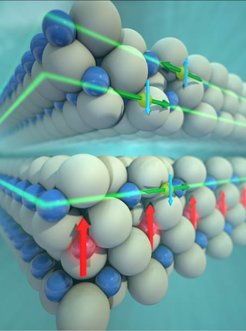Bismuth-rich topological materials: From discovery to devices
Topological insulators (TIs) are semiconductors in the bulk, but possess metallic surface states that are protected by the topology of the bulk electronic structure. Their momentum (propagation direction) and their spin are locked orthogonally. This stabilization can only be broken by strong perturbation, e.g. by an energy exceeding the topologically non-trivial bandgap of the bulk. As a result, these surface electrons are protected against backscattering from nonmagnetic impurities, leading to dissipation-free charge transport and preservation of spin orientation under suitable conditions. Therefore, TIs are envisioned as promising materials for high-performance spin field effect transistors (SFET) and as quantum bits in quantum computing. Despite the strong interest, the number of TIs experimentally proven as well as useable under “real-world” conditions is still quite limited.

One type of topological protection in TIs, the earliest proposed theoretically and verified experimentally, is based on strong spin-orbit coupling (SOC). The reason is that SOC causes an inversion between states with opposite parities around the bandgap. When such an inverted semiconductor comes into contact with a material with trivial parity sequence (normal semiconductor, air, vacuum), the states with the same parity combine at the interface to form metallic and spin-polarized surface states that cross the bandgap. Since SOC increases with the atomic number and is particularly strong in p-orbitals, bismuth, as the heaviest non-radioactive element, is an excellent choice for the synthesis of TI materials. Important bismuth-based TIs include e.g. Bi2Te3, Bi2TeI, Bi14Rh3I9, and MnBi2Te4.
The project is on the discovery of new bismuth-rich topologically non-trivial materials, preferably with an intrinsic magnetization. It comprises synthesis, crystal growth, and thorough chemical and physical characterization in close cooperation with other scientists. The desirable goal would be a small electronic device (e.g. a SFET) in which the unique transport properties of the new (or also known) TIs are used beneficially.












